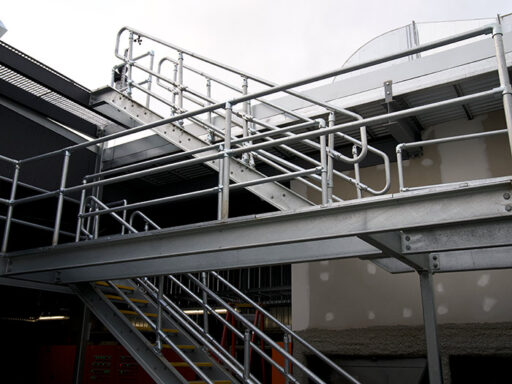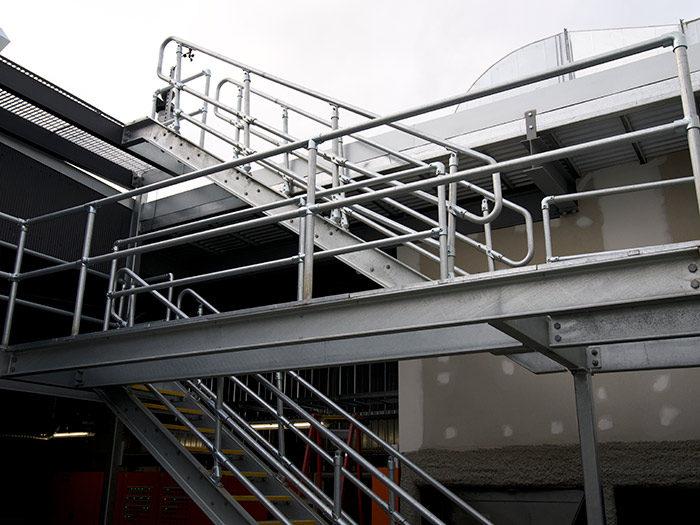What Are Toeboards and Their Standard Height?
Toeboards are one of the important components of safety, it is widely utilized in the construction industry to prevent tools, materials, and other objects from falling off elevated edge surfaces and this can be harmful to any individual. Typically implanted at the edge of platforms, scaffolds, and other elevated work areas, toeboards serve as a barrier that enhances the safety of both workers on the platform and individuals below.
If we talk about the obvious question that people ask in between construction, what toeboards are Usually _ Inches High and Used on Landings and Balconies The answer is simple, the standard height for toeboards is generally around 4 inches. This height is not arbitrary; it is determined based on regulatory guidelines and industry best practices aimed at ensuring maximum safety. Sticking to this height is fundamental for consistency with safety standards like those set by the Occupational Security and Health Administrator (OSHA) in the US. These guidelines are in place to reduce the risk of accidents and injuries brought about by falling objects, which are one of the main sources of workplace incidents in construction settings.
Installing toeboards at the recommended height of 4 inches plays a significant role in maintaining a safe work environment. By providing a physical barrier, toeboards help to contain tools and materials, preventing them from slipping off the edge of elevated surfaces. This is particularly important when workers are engaged in tasks that involve the use of small tools or loose materials, which can easily be dislodged.
Categories and Types of Toeboards
As we understand, the toeboards are an essential component in construction safety, providing a barrier at the edge of an elevated place to save tools, materials, and debris from falling. Understanding the different categories and types of toeboards is important for selecting the right one for your construction project. The primary types of toeboards include metal, wood, and plastic, each with unique advantages and disadvantages.
Metal Toeboards: Typically made from steel or aluminum, metal toeboards are known for their high durability and strength. They are exceptionally impervious to weather conditions and can endure critical effects, making them ideal for long-term projects and environments where large equipment is utilized. Nonetheless, metal toeboards can be heavier and more challenging to install compared to other types. They are also more expensive, which could be a consideration for budget-sensitive projects.
Wood Toeboards: Wood toeboards are often used in temporary or short-term construction projects. They are relatively inexpensive and easy to install, offering a quick solution for safety compliance. However, wood is susceptible to weathering, rot, and damage from insects, which can compromise its effectiveness over time. Therefore, while wood toeboards are suitable for indoor applications or projects in mild weather conditions, they may not be the best choice for more demanding environments.
Plastic Toeboards: Made from high-density polyethylene (HDPE) or similar materials, plastic toeboards offer a lightweight and versatile option. They are impervious to corrosion, rot, and chemical exposure, making them reasonable for a wide range of environments. Moreover, plastic toeboards are not difficult to install and maintain. Nonetheless, they may not offer a similar degree of effect obstruction as metal toeboards and can become weak in very cool temperatures. Therefore, their application might be limited in heavy-duty industrial settings.
Choosing the right type of toeboard involves evaluating the specific needs and conditions of your construction project. Factors such as project duration, environmental conditions, and budget constraints play a significant role in determining the optimal toeboard material.
Utilization of Toeboards in Construction
Toeboards play a crucial role in maintaining safety standards in the place of construction. They are primarily utilized in various areas such as landings, balconies, scaffolding, and stairwells. Each of these locations has specific safety requirements that toeboards help to fulfill, ensuring compliance with industry regulations.
On landings, toeboards are essential for saving tools, materials, and debris from falling to lower levels, which could pose significant harm to workers below. The use of toeboards on landings ensures that the workspace remains organized and safe from potential accidents.
Conclusion
For optimal effectiveness, best practices for toeboard installation and maintenance should be followed. Ensure that toeboards are securely fastened and regularly inspected for wear and tear. Replace any damaged sections promptly to maintain their protective capabilities. By integrating these practices, construction sites can maximize the safety benefits toeboards offer, thereby creating a secure and compliant working environment.

Read More interesting Topics With : YOURS
- Roblox Unblocked 66: Unlocking Endless Gaming Possibilities
- CoolMathGames Unblocked: Your Ultimate Destination for Fun and Learning
- Derrick Henry Cowboys: A Name that resonate in NFL
- The Alexee Trevizo Case: Latest Updates, Verdict Insights, and Ongoing Legal Battles in 2024
- Tyson vs Paul: A Clash of Generations in the Boxing Ring





